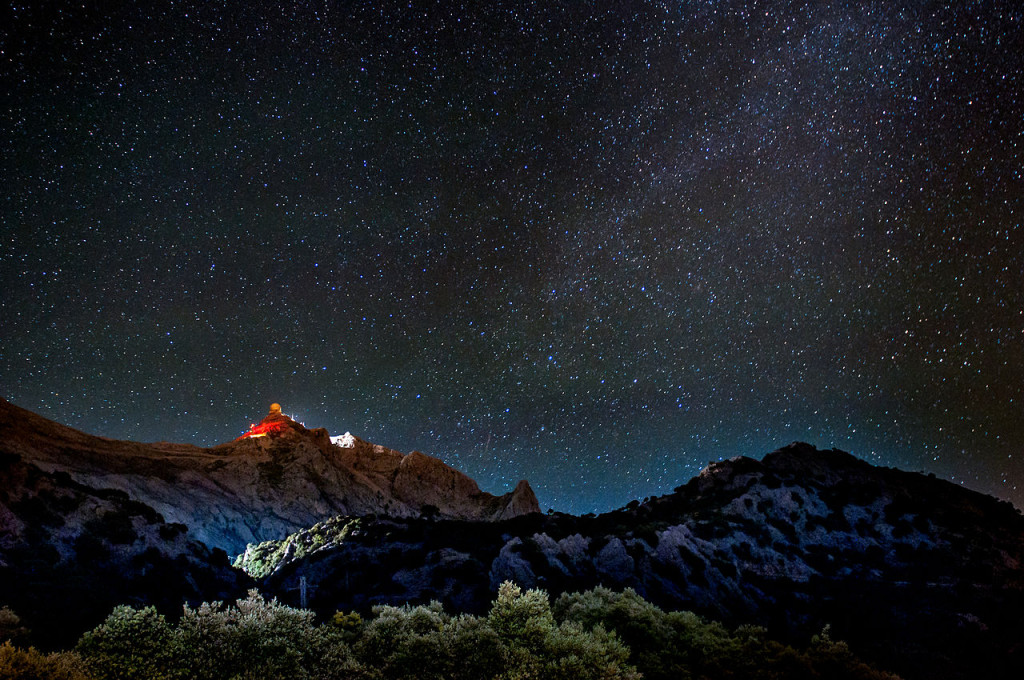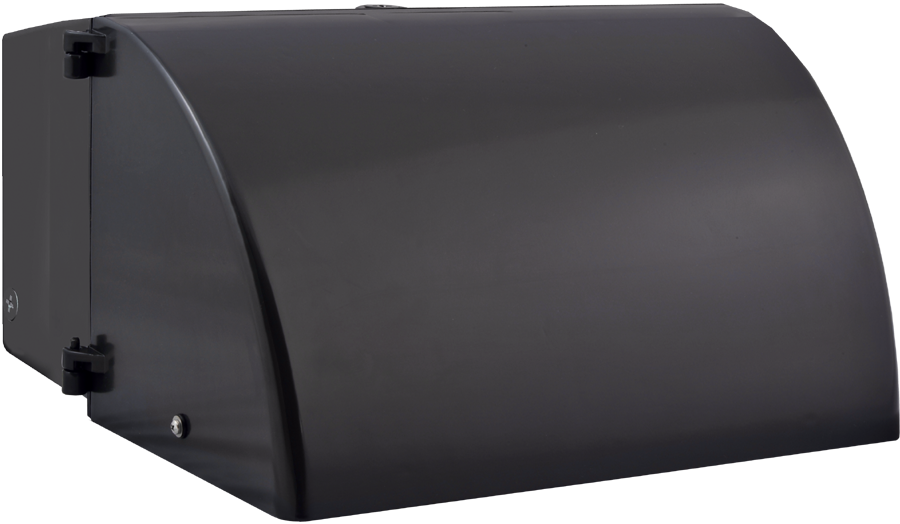
No, this isn’t dawn in New York City, it’s the middle of the night. This is light pollution at work.
By Clarissa Allison | August 14th, 2015
Look up at the sky tonight in your town. Odds are it will be almost completely devoid of stars. This is the product of light pollution and urbanization. Since human beings are used to dwelling in the sun’s light, we have essentially engineered the dark to surround ourselves with light during nighttime hours.
What exactly is light pollution?
Light pollution can be defined as any negative effect that artificial lighting has on our surrounding environment, such as: glare, light trespass, decreased visibility at night, and energy waste. Light pollution is not just undesirable, it can also affect our health and the health of animals.
Largely the result of bad lighting design that directs artificial light outward and upward into the sky, badly-designed lighting washes out the darkness of night and alters light levels drastically. Many forms of life, including ourselves, have adapted to this phenomenon. Several aspects of earthly life—migration, reproduction, feeding—are affected by man-made light. The damage from light pollution is akin to the long term damage of a toxic chemical spill. We all need to be conscious of what this means for our planet and the life within it.
Light pollution:
- is a risk factor for cancer to people
- is a disturbance to animals
- is a waste of energy, resources, and money
- is a security risk to your property
- and obscures our view of the wondrous night sky.
The Difference Between Good and Bad Lighting
The use of electrical lighting, is actually quite recent. After relying on daylight and fire for thousands of years (as well as bonfire, torches, candles and oil) the use of incandescent lamp reached a large scale at the beginning of the 20th century. The most important aspect of lighting at that time was mainly related to quantity. How much was needed to provide light for people to cope in the visual environment also during the dark hours was paramount.
Powerful fluorescent lamps and the like were introduced in the 1950’s along with the introduction of high-intensity discharge lamps. The development of powerful bright light sources lead to considerations of avoiding glare (using light diffusers, later light louvers). Discharge light sources raised the issue of color rendering and color temperature. Today, LEDs are at the forefront of the newest light sources as they enable better approaches to lighting design and practice. LEDs introduce new possibilities for color temperature and energy savings, and compared to conventional light sources they are smaller in size.
Although there are thousands of lighting manufacturers in the world today, the fundamentals of lighting remains the same: to supply enough light with proper lighting distribution in space, with good spectral qualities and little or no glare, at reasonable costs. The development of light sources provides both opportunities and challenges for the lighting design industry. Lighting must be not only adequate in terms of quantity, but also meet lighting quality demands.
Good Outdoor Lighting Should Provide:
- Adequate lighting should allow for people to carry out their visual tasks. Typical applications include lighting conditions for navigating, writing, typing, reading, communicating or performing detailed tasks like sorting products.
- Low energy consumption. LED light bulbs use only 2-17 watts of electricity (1/3rd to 1/30th of Incandescent or CFL). LED bulbs used in fixtures inside the home save electricity, remain cool and save money on replacement costs since LED bulbs last so long. Small LED flashlight bulbs will extend battery life 10 to 15 times longer than with incandescent bulbs. As traditional electric lights continue to give off more heat than light. An incandescent light bulb only uses 10 percent of its energy to create light. Fluorescent lighting — which has been the green standard in energy efficiency — still wastes nearly half of the electricity it consumes in generating heat. All of this lost energy is significant considering that lighting devours more than a quarter of a typical commercial building’s electricity, as reported by the U.S. Energy Information Administration.
- Minimal glare. Glare is caused by high excessive luminescence differences in the visual field. “Disability glare” and “discomfort glare” are two common types of glare. This is visual discomfort in the presence of bright light sources, luminaries, windows or other bright surfaces
- No light trespass. Light trespass occurs when light spills over and is cast where it is not wanted. Though somewhat subjective since its boundaries are difficult to define, an example of light trespass is when when the light from a streetlight or floodlight enters your window or illuminates an indoor area where it is not wanted.
As you can see, with only a few guidelines, a great deal of the problems regarding light pollution are immediately dealt with and solved.
Bad Outdoor Lighting Affects Wildlife:
Research into the health and environmental effects of light pollution is still in its infancy, but we already know enough to know we have a problem. The immediate problems that poor lighting can cause are shown below.
Light is one of the environmental triggers that tell animals where to go and what to do. Newly hatched sea turtles are drawn to the brightest point on the horizon, which, in a state of nature, would be the moonlit sea. But when artificial light is added to the mix they often become completely disoriented. Along the same lines, if the beach is too bright, female sea turtles will not dig their nests. Studies have shown that birds who migrate by night, using t he moon and stars for navigation, are confused by big city lights. Entranced by the glimmering downtown buildings, they collide with the towers and die in vast numbers every spring and fall. Moths, too, die in droves when attracted by artificial lights, as most of us have witnessed (and heard in plenty of songs)!
Light pollution can also cause a disruption of circadian rhythms, not only in humans and animals but plants. A plant may not generate phytochrome in the glare of artificial light. Abnormal levels of this photosensitive hormone can have consequences for a plant’s flowering cycle, seed germination and dormancy.
Exposure to excessive light at night reduces production of our own photosensitive hormone, melatonin, and has been linked to breast cancer.
The solution requires directing lights where they’re needed and eliminating waste.
These problems are sufficiently severe that the American Medical Association voted unanimously in 2009 to support efforts to control light pollution.
Here are five things you can do to help curb light pollution:
1. Turn The Lights Off. It’s obvious, cheap, and effective. To reduce light pollution, start turning things off. Turn on lights when you need them, or use portable lighting. You can even put your outdoor or security lights on a motion sensor or timer to reduce usage.
2. Replace outdoor lights with well designed, low-glare fixtures. Did you know that The International Dark-Sky Association evaluates fixtures for low glare and efficiency? Look for fixtures that boast a Dark Sky Approval rating. You can find a host of dark sky lighting fixtures available on the Louie Lighting website HERE.
3. Place motion sensors on essential outdoor lamps. Motion sensitive switches will light up porches and walkways when you need to move around after dark. They’ll pay for themselves in no time.
4. Replace conventional high-energy bulbs with efficient outdoor CFLs and LED floodlights. While efficiency lighting will reduce your monthly bill and your carbon footprint. Also look into solar walkway lights. If you live on the West Coast and typically enjoy lots of sunny days, these could be a great answer for your landscape lighting. Check out our selection of solar powered lights and accessories HERE.
5. No more uplighting. Uplight is essentially wasted light. Light that shines directly up into the night sky is serves no true purpose. The bane of astronomers and the occasional stargazer, uplight causes atmospheric scattering making distant celestial light sources difficult or impossible to see. Uplight often also goes along with two other light quality culprits by producing both glare and light trespass.
Once you’ve accomplished the above tasks, go out and buy yourself a telescope to view the night sky and enjoy its beauty.
Enjoy a tour of the wonderful Lowell Observatory in Flagstaff, Arizona
Please let us know if you have any questions about finding the correct Dark Sky lighting fixture for your landscape or outdoor area. Email us at info@louielighting or call us toll free at 1877 385 2104. The Louie Lighting Team wishes you and yours a safe and happy weekend full of stargazing.







Leave a Reply